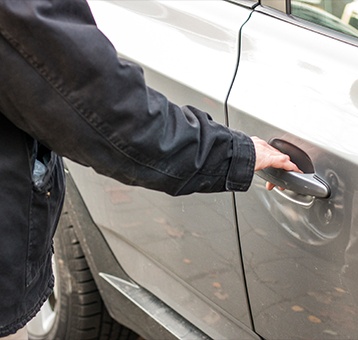 “It’s easier to keep an existing customer happy than to get a new customer.” That’s a classic business mantra. The same can be said for a fatherhood program. Just because a father comes to the first session of your program, it doesn’t mean he’ll come back. So before moving on, we’d like to share the most critical factors in keeping fathers coming back.
“It’s easier to keep an existing customer happy than to get a new customer.” That’s a classic business mantra. The same can be said for a fatherhood program. Just because a father comes to the first session of your program, it doesn’t mean he’ll come back. So before moving on, we’d like to share the most critical factors in keeping fathers coming back.
Create a father-friendly organization. Creating an organization with a father-friendly environment is the foundation of an effective fatherhood program. Therefore, it’s the first step to keeping fathers in your program. Simple strategies, such as hanging posters that show fathers interacting with their children and family, tell fathers that they’re welcome and valued. Please visit our resource store where you can order posters like these.
You can download our free Father Friendly Check-Up™ to assess how well your organization is set up to succeed with a fatherhood program. It will also help you create no- and low-cost strategies to make your organization and its environment even more father friendly!
Contact the father and family prior to the first session. Regardless of the manner in which a father enters the program, if at all possible call or visit the father and the family before the first session. Introduce yourself, talk about the program a little, and discuss some of the concerns the father might express.
Here are a few ideas for helping fathers find transportation.
Help arrange transportation when necessary. Fathers can’t attend the program if they can’t get to program sessions. Transportation will be a big problem for some fathers. Lack of a car and the cost of using public transportation, a cab, or a ride share—not to mention gasoline and parking—can prevent some fathers from attending. It’s not unusual to find that the fathers who can’t get transportation are the fathers who would profit the most from participating in the program.
- Select a site for program sessions that’s accessible to public transportation.
- Contact the local department of social services, church groups, and volunteer programs for possible transportation assistance (e.g., staff or volunteers can pick up fathers).
- Arrange carpooling among program participants.
- Write a grant to purchase a vehicle staff can use to pick up fathers or to acquire funds that fathers can use for their own transportation (e.g., bus tokens).
Select a convenient, consistent time for each session. Just as scheduling sessions at times that will help recruit fathers, convenient times will maximize the probability of fathers’ attending on a regular basis. An early evening start time during the week or an early morning starting time on the weekend, for example, can increase the probability of fathers’ attendance. Be aware of times when session times conflict with fathers’ other commitments (e.g., sport leagues, self-help support groups, Boy/Girl Scout meetings, church group meetings, etc.). Although eliminating conflicting schedules for every father is unlikely, try to minimize conflicts as best you can.
Begin and end on time. Your session times must be consistent and predictable. If the starting time is 6:30 p.m., begin at 6:30 p.m., even if only half of the fathers are present. Make every attempt to end the sessions on time. Transportation schedules, babysitters, children’s bedtime, and other factors will be affected should start and end times fluctuate.








 There's a popular saying that we’re sure you’ve heard: “Build it and they will come.”
There's a popular saying that we’re sure you’ve heard: “Build it and they will come.”


 “It’s easier to keep an existing customer happy than to get a new customer.” That’s a classic business mantra. The same can be said for a fatherhood program. Just because a father comes to the first session of your program, it doesn’t mean he’ll come back. So before moving on, we’d like to share the most critical factors in keeping fathers coming back.
“It’s easier to keep an existing customer happy than to get a new customer.” That’s a classic business mantra. The same can be said for a fatherhood program. Just because a father comes to the first session of your program, it doesn’t mean he’ll come back. So before moving on, we’d like to share the most critical factors in keeping fathers coming back.



 This section will equip you with the essential tactics you’ll need to begin recruiting for your fatherhood program.
This section will equip you with the essential tactics you’ll need to begin recruiting for your fatherhood program.
 Given that the foundation for creating a positive image is developing a strong referral network of community organizations, you might wonder where to start. To create such a network, start by identifying a staff person(s) who will be responsible to reach out to, meet with, and maintain regular contact with other community organizations and partners about your program. One-time contact won’t generate the long-lasting connections you need.
Given that the foundation for creating a positive image is developing a strong referral network of community organizations, you might wonder where to start. To create such a network, start by identifying a staff person(s) who will be responsible to reach out to, meet with, and maintain regular contact with other community organizations and partners about your program. One-time contact won’t generate the long-lasting connections you need.
 When it comes to recruiting fathers, we encourage you to be innovative in your efforts. Be bold. Implement creative ideas to recruit and retain fathers in your program, create a positive image in the community,
When it comes to recruiting fathers, we encourage you to be innovative in your efforts. Be bold. Implement creative ideas to recruit and retain fathers in your program, create a positive image in the community,


